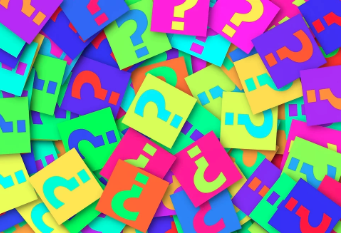
Unplugged: What is Computational Thinking?

Overview
Computational Thinking and coding go hand-in-hand. But what does it mean to think computationally, and how do we introduce this type of thinking to students?
In this unplugged activity, students experience what it’s like to be a programmer while they code another student to complete a drawing.
Learning Objectives
Students will:
- Be able to define computer programming.
- Be able to act as a computer programmer and give coding input.
- Be able to act like a computer and create coding output.
Vocabulary
Vocabulary Words:
-
Programming: Computer programming is the process of developing a set of instructions and inputting those instructions into a coding language so that a computer can accomplish a certain task.
-
Computer programmer: A Computer Programmer is someone who can write the code necessary for a computer to accomplish a task.
Pre-planning
To prepare for this lesson:
This is an activity to teach computer programming by experiencing what it’s like to be a programmer and what it’s like to be a computer.
Unplugged activities are a good way to start so students can apply the knowledge of what they are learning when they go into the computer lab and begin coding.
Set-up the classroom so that students will be able to sit back-to-back.
Check out Drawing Twins: A Simple Art Game. In this simple game one player prepares a drawing and describes it to the others. As they listen, the other players try to draw what they hear described. At the end, compare the various drawings and see whether they match! Note: The pre-prepared images are no longer available.
Accommodations
See the Accommodations Page and Charts on the 21things4students website in the Teacher Resources.
Steps
Directions for this activity:
-
The teacher says “Today, we are going to learn about computer programming by experiencing what it’s like to be a programmer and what it’s like to be a computer.”
-
The teacher pairs the students in groups of two.
-
The teacher has the students identify as Partner A and Partner B.
-
The teacher explains that both students will have the opportunity to play the role of the computer programmer and the role of the computer.
-
The teacher has the students sit back-to-back.
-
The teacher gives each Partner A a simple line drawing like those found at the communication drawing twins website.
-
Have Partner A “Code” Partner B to draw the given drawing by using their voice alone.
-
Then, have the Partners switch roles by having Partner B give the instructions and Partner A creates the drawing. Be sure to give a different drawing to Partner B.
-
Have a whole-class discussion to debrief the success and struggles of completing the activity.
-
The teacher discusses with students how this is similar to the instructions that we give computers through coding. We have to tell it what to do, where to do it, how large to do it, and how many times. This is the purpose of computer programming. Furthermore, we must use a language that the computer understands.
Assessment Options
Different options for assessing the students:
- Observations
- Check for understanding
- Check out the drawings that the students have created and the students discuss what they heard from their partner as they created the drawing.
MITECS Competencies & ISTE STANDARDS
MITECS: Michigan adopted the "ISTE Standards for Students" called MITECS (Michigan Integrated Technology Competencies for Students) in 2018.
Computational Thinker
5c. Students break problems into component parts, extract key information, and develop descriptive models to understand complex systems or facilitate problem-solving.
5d. Students understand how automation works and use algorithmic thinking to develop a sequence of steps to create and test automated solutions.
Innovative Designer
4d. Exhibit a tolerance for ambiguity, perseverance, and the capacity to work with open-ended problems.
Creative Communicator
6c. Communicate complex ideas clearly and effectively by creating or using a variety of digital objects such as visualizations, models or simulations.
6d. Publish or present content that customizes the message and medium for their intended audiences.
Devices and Resources
Device: PC, Chromebook, Mac, iPad
Browser: Chrome, Safari, Firefox, Edge, ALL
App, Extension, or Add-on:
Websites:
CONTENT AREA RESOURCES
ELA
Students could write their instructions down and give them to someone to execute.
Integrated Arts
Students could create line drawings that would be easy to instruct someone to draw.
Math
Students could find the measurements of the drawing in order to provide a more exact set of instructions.
CREDITS
This task card was created by Jamila Kai Mathis, Shelby Township, March 2020. Updated March 2025.


